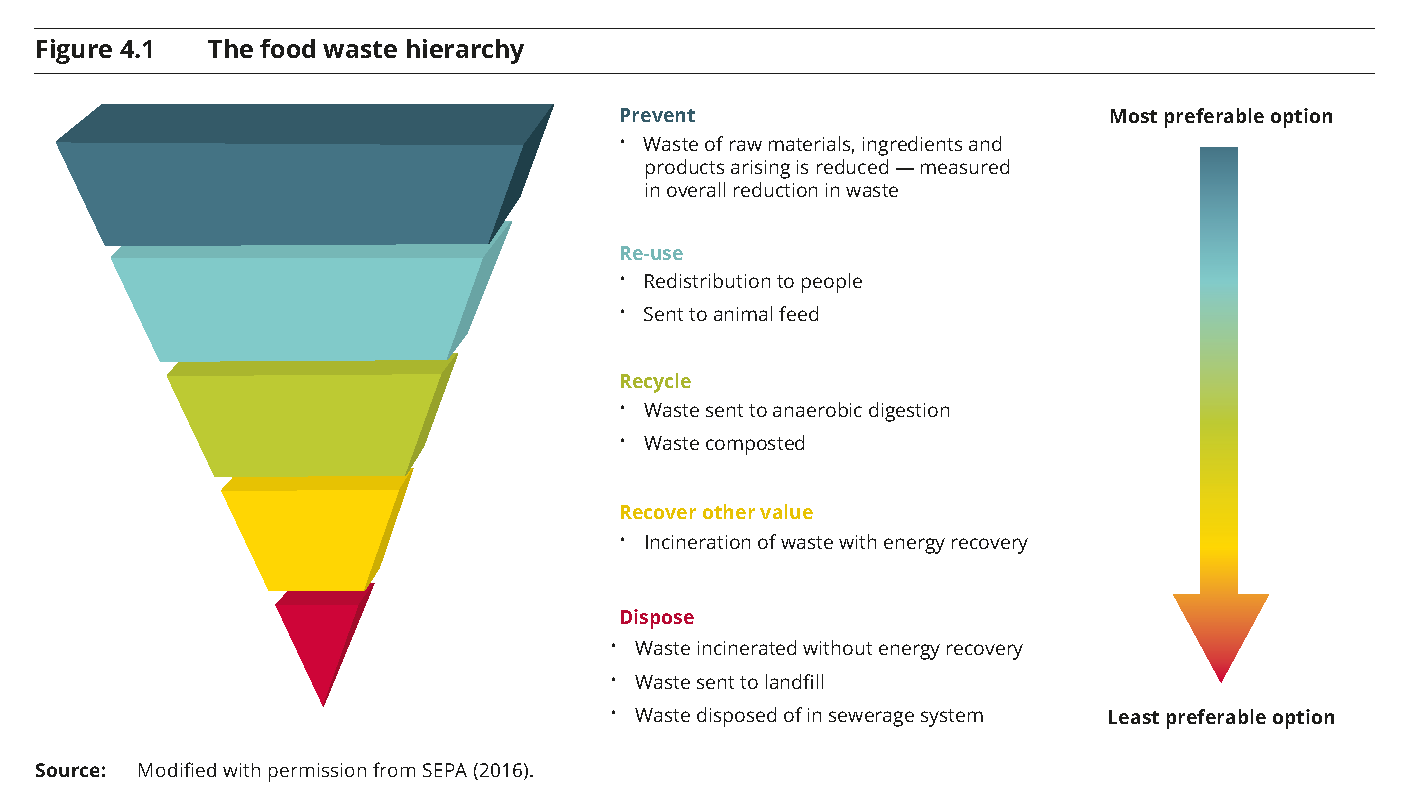UNIT 7
Home Composting Challenge
The best approach to food waste is to avoid it at all; however, it is not always possible.
There are also other ways of handling food waste – check out the chart below that lists all the possibilities in the order of their preferability:
One of the ways to recycle food waste is home composting.
Home composting might be beneficial for several reasons: it improves soil health and its ability to retain water; it reduces the need for artificial fertilizers and pesticides; it reduces the waste sent to landfill.
Join the Home Composting Challenge!
Even if you do not have a big garden, you can still try out composting – home plants would also appreciate the enriched soil. Here is how it is done properly:
Food waste subject to composting
A compost full of nutrients requires four ingredients: the greens, the browns, air and water. The greens are vegetable peelings (please, no cooked vegetables!), fruit waste, tea bags, plant prunings and grass cuttings – these rot quickly and produce the needed nitrogen and moisture. The browns are: cardboard, egg boxes, scrunched up paper, twigs, fallen leaves, and also egg shells. The browns rot slower; they provide fiber, carbon and create important air pockets. Usually you are not supposed to put the following into your compost bin/heap: cooked vegetables, meat and dairy products, bones, fat, oils, diseased plants, pet droppings of baby nappies. These might attract rodents and other pests.
The right place and vessel
To compost at home, you have to pile up organic materials to form a compost heap; to do so, you can use simply constructed boxes. Alternatively, you can get a composting bin with air openings and a lid. The bin should be placed on a level well-drained spot so that the water can drain out easily and so that helpful creatures such as worms could get inside and help to break down the contents. To speed up the process a bit, you can put the bin in a sunny spot.
The procedure
The most common way of composting is a “slow-stack technique” where a user adds organic matter to the container regularly, and it decomposes naturally into a compost. Make sure to maintain the correct carbon to nitrogen ratio (25-30 to one); to do, so you have to mix carbon rich materials (straw, leaves, cardboard, etc.) with nitrogen rich materials such as grass cuttings, raw fruit and vegetables. Depending on weather conditions, you might have to add water to the heap. Stirring the contents regularly is also highly recommended to speed up the process. The compost is ready when it looks dark, rich and crumbly; it might take from 4 to 12 weeks. When ready, you can spread the compost over your flower beads.
Source 1, Source 2, Source 3 to learn more about the home composting process.
Take advantage of municipal recycling and composting
Many European countries now offer the services of collecting biowaste and composting or recycling it on a municipal level. Make small research to see if your municipality offers such services – if yes, check what type of bio-waste can be collected and download a waste collection calendar.
Brainstorm
Think of other possible ways to manage your food waste, e.g. donate to animal shelters, local farmers, neighbors breeding certain animals (stole bread is good enough to feed chicken, who also need calcium that they can get from eggshells, etc.).

